Ancient Intriguing Sao People: “Men From Another Time” – One Of The Oldest Civilizations Of Central Africa
A. Sutherland - AncientPages.com - The Sao people - means "the men from another time" are an intriguing and one of the oldest civilizations of Central Africa.
Ancient civilization was developed by the Sao people in the region of Southeast of Lake Chad, located in the far west of Chad and the northeast of Nigeria.
Fragment of an anthropomorphic figurine in terracotta Sao. Image source.
The Sao civilization is identified by its use of stone and bone implements and the construction of walled cities.
This civilization flourished in Middle Africa from ca. the sixth century BC to as late as the sixteenth century AD. The Sao lived by the Chari River south of Lake Chad in territory that later became part of Cameroon and Chad. They are the earliest people to have left clear traces of their presence in the territory of modern Cameroon.
According to a Toubou tradition, the Sao originally come from a region about 500 kilometers north of Lake Chad. In the 7th century, they lived in the Bilma, Tadjeré, and Fatchi oases.
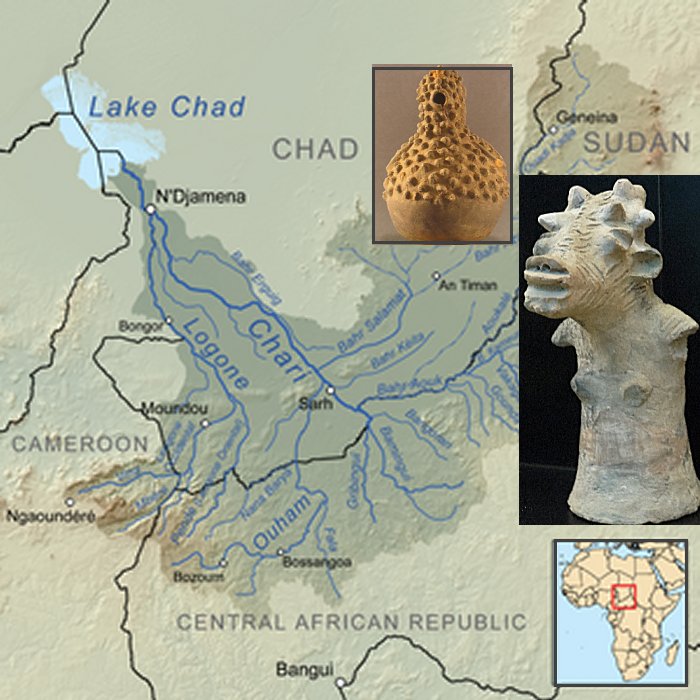
The Sao civilization may have begun as early as the sixth century BCE, and by the end of the first millennium BCE, their presence was well established south of Lake Chad and near the Chari River.
In the 11th century, the Sao, who were great architects, built large cities surrounded by dry earth walls complete with fortifications and ramparts. Sometime around the 16th century, conversion to Islam changed the cultural identity of the former Sao but they still claim descent from the civilization of the Sao.
It had long been suggested that the Sao were descendants of the Hyksos who conquered Ancient Egypt that they moved south from the Nile valley into middle Africa under pressure from invaders, or that they originated in the Bilma Oasis north of Lake Chad.
However, a more widely accepted theory is that the Sao people were simply the indigenous inhabitants of the Lake Chad basin and that their ultimate origins lie south of the lake. Recent archaeological studies suggest that the Sao civilization developed indigenously from earlier cultures in the region (such as the Gajiganna culture, which began at around 1,800 BC and began to build fortified towns by about 800 BC), which gradually increased in complexity.
Sao artifacts show that they were a sophisticated civilization working in bronze, copper, and iron. Finds include bronze sculptures, funerary urns, terra cotta statues of human and animal figures, coins, household utensils, jewelry, highly decorated pottery, and spears.
 Sao art. Museo di Quai Branly, Parigi. source
Sao art. Museo di Quai Branly, Parigi. source
Most of the archaeological finds related to the Sao people have been uncovered south of Lake Chad.
Studying Sao’s legacy, researchers discovered that these people buried their dead.
Tombs have been found, grouped in vast necropolises some of which had three, even four levels. The oldest of these tombs were simple pits where the corpse would be laid down on its back, the head resting on a kind of dried clay pillow.
The Sao people developed remarkable pottery especially large terra cotta earthenware jars, entirely or partially decorated with a herringbone pattern over which sexual motifs were added. A smaller earthenware jar, in which the deceased would be placed in the fetal position, was closed either by another jar of the same size placed upside down over the opening or more frequently by a smaller ovoid pot.
The tradition of placing the corpse in a jar dates from the 12th and 13th centuries. Beginning in the 15th century, this type of burial would start to be abandoned in favor of a simple burial. The culture’s terracotta animalistic and anthropomorphic sculptures represent the legacy that best attests to their civilization of Sao.
These intriguing figures – often associated with funerals - were discovered in the Sao’s sanctuaries and other places of offering.
Little is known about the Sao's culture or political organization because they left no written records and are known from oral traditions of the Sao and through archaeological discoveries. Sao artifacts show that they were skilled workers in bronze, copper, and iron.
Finds include bronze sculptures and terra cotta statues of human and animal figures, coins, funerary urns, household utensils, jewelry, highly decorated pottery, and spears.
The largest Sao archaeological finds have been made south of Lake Chad.
Written by – A. Sutherland AncientPages.com Staff Writer
Copyright © AncientPages.com All rights reserved. This material may not be published, broadcast, rewritten or redistributed in whole or part without the express written permission of AncientPages.com
More From Ancient Pages
-
 Ancient Indian Text Re-Writes History Of Number Zero And Mathematics
Archaeology | Sep 15, 2017
Ancient Indian Text Re-Writes History Of Number Zero And Mathematics
Archaeology | Sep 15, 2017 -
 Cave Of The Stone Sepulcher – ‘Actun Tunichil Muknal’ And Its Dark History
Featured Stories | Mar 22, 2019
Cave Of The Stone Sepulcher – ‘Actun Tunichil Muknal’ And Its Dark History
Featured Stories | Mar 22, 2019 -
 Bizarre Sound Of A Crash Remains An Unexplained Mystery
Featured Stories | Oct 22, 2020
Bizarre Sound Of A Crash Remains An Unexplained Mystery
Featured Stories | Oct 22, 2020 -
 Who Was The Mysterious Spitalfields Roman Noblewoman Dressed In Silk Found In A Sarcophagus In London?
Archaeology | Dec 21, 2020
Who Was The Mysterious Spitalfields Roman Noblewoman Dressed In Silk Found In A Sarcophagus In London?
Archaeology | Dec 21, 2020 -
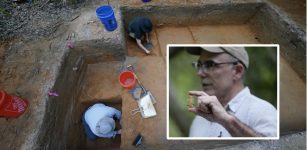 12,000-Year-Old Artifacts In Louisiana Saved By Scientists
Archaeology | Jul 18, 2023
12,000-Year-Old Artifacts In Louisiana Saved By Scientists
Archaeology | Jul 18, 2023 -
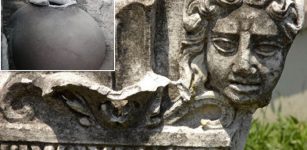 Huge Phitos (Jar) Unearthed In Ancient City Of Prusias ad Hypium, Turkey
Archaeology | Jun 26, 2022
Huge Phitos (Jar) Unearthed In Ancient City Of Prusias ad Hypium, Turkey
Archaeology | Jun 26, 2022 -
 Archaic Marble Lions On The Sacred Island Of Delos
Artifacts | Feb 27, 2021
Archaic Marble Lions On The Sacred Island Of Delos
Artifacts | Feb 27, 2021 -
 Unearthing Vadnagar And The Search For Hueng Tsang’s 10 Monasteries
Archaeology | Dec 11, 2015
Unearthing Vadnagar And The Search For Hueng Tsang’s 10 Monasteries
Archaeology | Dec 11, 2015 -
 Why Did Winter Baths Become So Popular?
Ancient History Facts | Jan 16, 2024
Why Did Winter Baths Become So Popular?
Ancient History Facts | Jan 16, 2024 -
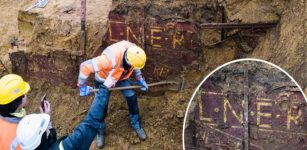 Mysterious Railway Car Discovered Under An Old Fortress In Antwerp, Belgium
Archaeology | Apr 12, 2024
Mysterious Railway Car Discovered Under An Old Fortress In Antwerp, Belgium
Archaeology | Apr 12, 2024 -
 Oh, Whistle, And I’ll Come To You, My Lad – A Christmas Ghost Story
Christmas Traditions | Dec 28, 2024
Oh, Whistle, And I’ll Come To You, My Lad – A Christmas Ghost Story
Christmas Traditions | Dec 28, 2024 -
 What Was The Law Of The Innocents?
Ancient History Facts | Feb 10, 2016
What Was The Law Of The Innocents?
Ancient History Facts | Feb 10, 2016 -
 Traces Of Ancient Near East Civilization In America – An Out-Of-Place Ancient Inscription – Part 2
Ancient Mysteries | Nov 13, 2020
Traces Of Ancient Near East Civilization In America – An Out-Of-Place Ancient Inscription – Part 2
Ancient Mysteries | Nov 13, 2020 -
 Steamship SS Mesaba Sent Warning To RMS Titanic In 1912 – Her Wreck is Now Identified
Archaeology | Sep 27, 2022
Steamship SS Mesaba Sent Warning To RMS Titanic In 1912 – Her Wreck is Now Identified
Archaeology | Sep 27, 2022 -
 Cosmic Message Of The Zapotec Glyphs In The Valley Of Oaxaca – Deciphered!
Archaeology | Mar 10, 2022
Cosmic Message Of The Zapotec Glyphs In The Valley Of Oaxaca – Deciphered!
Archaeology | Mar 10, 2022 -
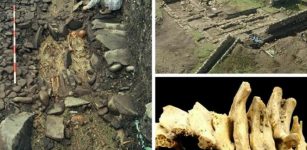 Isle Of May Was A Pictish Healing Center – Monks Used Herbs To Treat Sick And Dying People
Archaeology | Feb 16, 2018
Isle Of May Was A Pictish Healing Center – Monks Used Herbs To Treat Sick And Dying People
Archaeology | Feb 16, 2018 -
 Secrets Of Ninja Swords – Favorite Weapon Of The Shinobi
Featured Stories | Aug 13, 2018
Secrets Of Ninja Swords – Favorite Weapon Of The Shinobi
Featured Stories | Aug 13, 2018 -
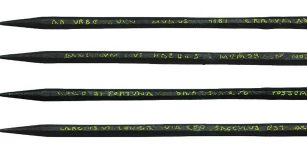 Ancient Roman Joke Inscribed On A 2,000-Year-Old Pen – Discovered
Archaeology | Jul 29, 2019
Ancient Roman Joke Inscribed On A 2,000-Year-Old Pen – Discovered
Archaeology | Jul 29, 2019 -
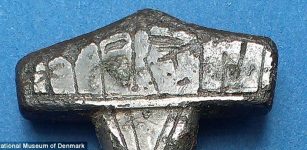 Remarkable Discovery Of Unusual “Hammer Of Thor” Finally Solves An Ancient Mystery
Archaeology | Jul 2, 2014
Remarkable Discovery Of Unusual “Hammer Of Thor” Finally Solves An Ancient Mystery
Archaeology | Jul 2, 2014 -
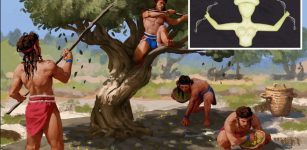 Ancient DNA Reveals “Completely Unexpected” Marriage Rules In Minoan Crete
Archaeology | Jan 16, 2023
Ancient DNA Reveals “Completely Unexpected” Marriage Rules In Minoan Crete
Archaeology | Jan 16, 2023

